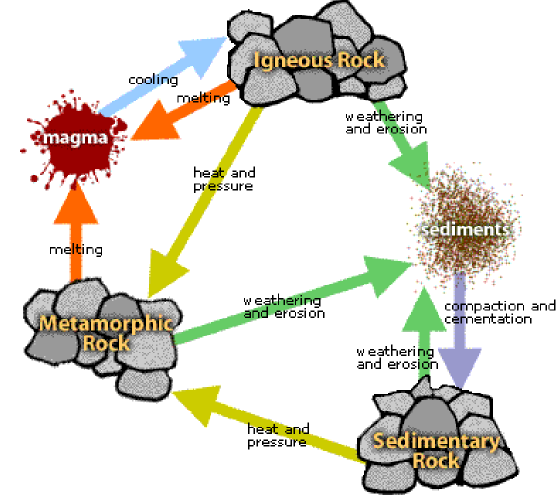4. Rock Cycle
Rock cycle is the intimate relationship and mutual interdependence between the three types of rocks—igneous, sedimentary and metamorphic. The change of one type of rock into another type under different conditions is known as the rock cycle.
In the cycle of rock change, the materials of the lithosphere are constantly being formed and transformed in both their physical and mineral composition. The rock cycle has neither a beginning nor an end.
There are two environments for the working of a rock cycle, such as:
(a) a surface environment of low temperature and pressure
(b) a deep environment of high temperature and pressure.
At the surface of the Earth, the igneous rocks are exposed to the agents of weathering and erosion. They are then broken and deposited in basins or depressions. Here the sediments are compressed and cemented into sedimentary rocks.
The leftover igneous rocks and the newly created sedimentary rocks are likely to change into metamorphic rocks due to heat and pressure in course of time.
The formation of sedimentary rock on the Earth’s surface and its conversion into metamorphic
rock takes place within the crust of the Earth.
The sedimentary rocks may be buried again and may melt to form the igneous rocks.
In the rock cycle, the matter of the Earth’s crust is not lost. The cycle of rock change has been active since our planet became a solid.
The loops in the cycle of rock change are powered by two main sources of energy such as:
♤ the heat inside the Earth, which can melt the existing rocks; and
♤ the solar energy responsible for weathering and erosion, and finally converting them into sedimentary rocks.
Throughout the geological period of millions of years, the mineral matter of the Earth has been changing due to the working of the rock cycle.
.


